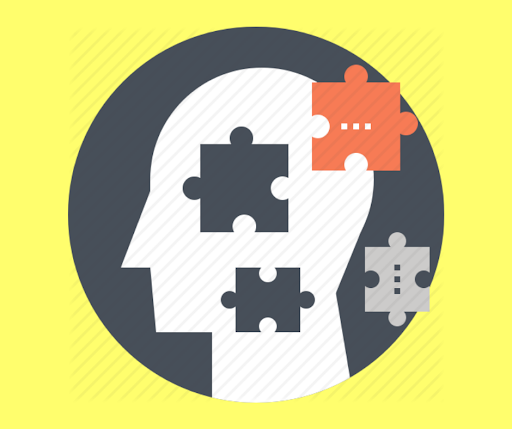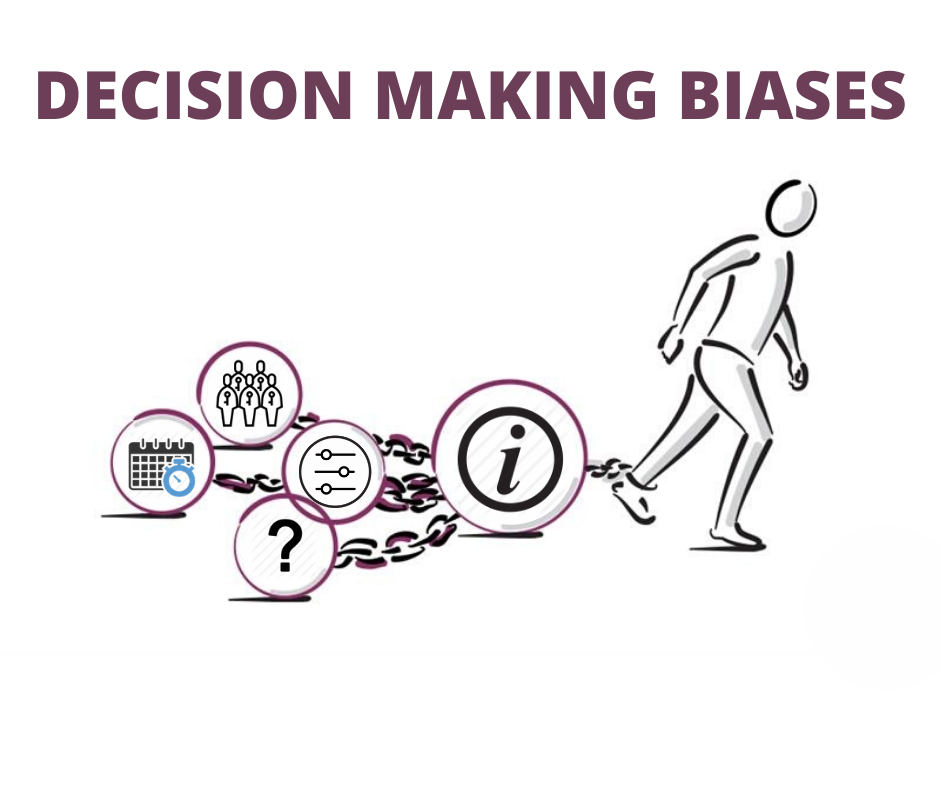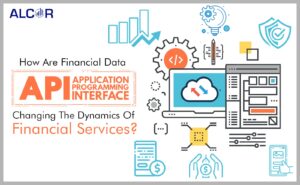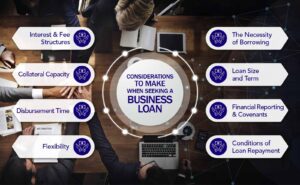We present the common decision-making biases and how to eliminate them. Suppose you’re evaluating a job candidate. She is the most qualified for the job. Still, something doesn’t feel right. How do you decide whether to hire her?
You might trust your intuition and send her on her way. The problem is you haven’t put your intuition to the test by going against it ever.
Perhaps your misgivings may be about more significant issues. What if the business environment in the new region isn’t as promising as forecast? What if employees have problems collaborating across borders?
Answers to such questions will shape decisions to scale back or grow. So, think through contingencies now.
You can outsmart your own biases. You start by understanding how they originate. It can be excessive reliance on intuition, defective reasoning, or both.
In this article, we will take you through some of the most common decision-making biases. We will also give you methods and reasons to eliminate prejudices. So, get set to make unbiased decisions from now on.
What is a cognitive or decision-making bias?
A bias is a systematic error in decision-making and thinking. It occurs when people process and interpret information in the world around them. It affects the decisions and judgments that they make.
People sometimes confuse cognitive biases with logical fallacies. But the two are not the same. A logical fallacy stems from an error in a logical argument.
At the same time, a cognitive bias is rooted in thought processing errors. It often arises from problems with memory, attention, attribution, and other mental mistakes.
The Evolution of cognitive and decision-making Biases
The concept of cognitive bias was introduced by Amos Tversky and Daniel Kahneman in 1972. Since then, researchers have described several different types of biases that affect decision-making.
These include social behavior, cognition, behavioral economics, education, management, healthcare, business, and finance.
Cognitive biases are mental shortcuts (known as heuristics). They make much sense: they’re designed to help us survive in the hunter-gatherer sense.
Our brains operate in much the same way today. This is despite our enormously different and fast-changing environment.
Several of these biases serve an adaptive purpose. They allow us to reach decisions quickly. This can be crucial if we are facing a threatening or dangerous situation.
The world is vastly complex. Humans have never before been bombarded by so much information daily. We cannot process all the information around us. Therefore, we must resort to mental shortcuts to make decisions quickly and effectively.
Asking those tougher questions does not come naturally. We’re cognitive misers. We don’t like to entertain uncertainties. It’s easier to seek closure, so we do.
When this narrow thinking weaves a story, System 1 kicks in. Intuition tells us, prematurely, that we’re ready to decide. So, we venture forth with high, unfounded confidence.
Other sources of bias involve System 2 thinking. Essentially, deliberate reasoning went awry. Cognitive limitations or laziness might cause people to focus on the wrong things. They may also fail to seek out relevant information.
This hems in our thinking. It leads us to focus on:
- one possible future (an office that performs as projected)
- one objective (hiring a person who can manage it)
- one option in isolation (the candidate)
To “debias” our decisions, it’s essential to broaden our perspective on all three fronts.
For example, you may be walking down a dark alley and spot a dark shadow that seems to be following you. A cognitive bias might make you think that it is a mugger. It may signal you to exit the alley as quickly as possible.
The dark shadow may have been caused by a flag waving in the breeze. But relying on mental shortcuts can often get you out of danger. There are situations where decisions need to be made quickly.
Signs of cognitive and decision-making Biases
Everyone exhibits cognitive bias. It might be easier to spot in others, but it is essential to know that it also affects your thinking. Some signs that cognitive bias might influence you:
- Only paying attention to news stories that confirm your opinions.
- Blaming outside factors when things don’t go your way.
- Attributing other people’s success to luck, but taking personal credit for your accomplishments.
- Assuming that everyone else shares your opinions or beliefs.
- Learning a little about a topic and then assuming you know all there is to know about it.
You like to believe that you are objective and logical. You would like to think that you are capable of evaluating all the available information.
Unfortunately, these biases sometimes trip us up. This leads to poor decisions and bad judgments.
Causes of cognitive and decision-making biases
The human brain is powerful. But it is subject to limitations. Cognitive biases are a result of your brain’s attempt to simplify information processing. Biases often work as rules of thumb.
They help you make sense of the world and reach decisions with relative speed. If you had to think about every possible option when making a decision, it would take much time.
The world is complex and has much information. So, it is necessary sometimes to rely on some mental shortcuts that allow you to act quickly.
Several different things can cause cognitive biases. But it is these mental shortcuts that often play a significant contributing role. These shortcuts are called heuristics of judgment heuristics.
While they can often be surprisingly accurate, they can also lead to errors in thinking.
-
Several of these biases are related to memory.
The way you remember an event may be biased for many reasons. Hence, this can lead to biased thinking and decision-making.
-
Other biases may be related to problems with attention.
Attention is a limited resource. So, people have to be selective about what they pay attention to in the world. Because of this, subtle biases can creep into your psyche. They influence the way you see and think about the world.
Other factors that can also contribute to these biases:
- Emotions
- Individual motivations
- Limits on the mind’s ability to process information
- Social pressures
Cognitive bias may also increase as people age. This is due to decreased cognitive flexibility with age.
Decision-making biases in management
We are all susceptible to biases. This is especially true when we’re fatigued, stressed, or multitasking. Just think of a CEO who’s negotiating a merger. He’s under pressure from lawyers to decide on a plant closing. Colleagues want him to manage layoffs.
In situations like this, we’re far from decision-ready. We’re mentally, emotionally, and physically spent. We cope by relying even more on System 1 judgments. We rely much less on careful reasoning.
Decision-making becomes faster and more straightforward. But quality often suffers. One solution is to delegate. It involves fighting bias at the organizational level.
This can be done using choice architecture. It will modify the environment in which decisions are made. Much of the time, though, delegation isn’t appropriate, and it’s all on you, the manager, to decide.
Former Goldman Sachs CFO David Viniar said it best. He said that your usual definition of extreme was not extreme enough.
So tap your inner crowd and allow time for reconsideration. Project an outcome. Then take a break (sleep on it if you can). Finally, come back and project another.
The common decision-making biases in management have to be overcome. This will facilitate significant organizational decisions.
Common Cognitive, Psychological, Behavioral, and Decision-Making Biases, Errors, and Heuristics

We are presenting a list of the most common decision-making biases:
-
Anchoring or Adjustment Heuristic
Being overly influenced by the first piece of information we receive.
It’s also known as “first impression bias.” It relates to the tendency to leap to conclusions based solely on what we learned early on.
Once your opinion is formed, it can be difficult to consider other options. This bias is common where people are stressed. It may also happen during a snap decision.
Imagine that you are trying to negotiate a deal with a client. Whoever makes that first offer has the edge. The anchoring effect will make that number the starting point for all negotiations.
For example, you may learn that the average price for a car is a particular value. So, you will think any amount below that is a good deal. You may perhaps not search for better deals.
This bias can be used to set the expectations of others. This can be done by putting the first information on the table for consideration.
How can you control it?
If you know you act hastily, slow down. Ask for more time, where possible. Consider when you make your decision, whether it’s influenced by a rush to find a verdict.
-
Availability Heuristics
Placing more value on the first idea that comes into your head.
Availability Heuristics describes how we believe something is significant because we believe it. It can also mean being biased by the newest, most recent information you’ve heard.
It may even be guessing the likelihood of an event occurring based on similar situations.
It’s effectively a cognitive shortcut. It saves us time when calculating risk. But it often means missing out on other solutions. This is because you’re convinced the first idea is the right one.
That’s why so many people are afraid of plane crashes, child abductions, and terrorism. These events are rare. But they are blasé about car accidents, which kill more than 30,000 Americans a year.
Your boss may ask you what the projected marketing will be for the coming year. You tend to rely on readily available information. But you may realize that maybe last years’ number isn’t the best choice for the coming year.
Being more cognizant of this bias can make an impact on your business decisions.
How can you control it?
The trick is to doubt your first answer. It doesn’t matter how good it seems. Send it back and consider other alternatives. This should be even if you end up reverting to your original response.
-
Confirmation or Selective Bias
Placing more value on information that supports our existing beliefs.
We have an instinctive inclination to do what makes us feel good. So, we often only listen to or respect the data that aligns with our viewpoints.
This makes us reject any information opposing our beliefs. But referring to material that reinforces pre-formed views leads to biased decision making.
A 2013 study showed that confirmation bias could affect how humans view statistics. People tend to infer information from statistics that support their existing beliefs. This is even when the data support an opposing view.
That makes confirmation bias a dangerous problem to overcome in organizational decision-making.
How can you control it?
If your decision-making is based on something you believe, challenge your pre-existing viewpoints. Ensure you take information from varied sources. Consider different perspectives.
Discuss your opinions with people who think differently. Before making decisions, always play devil’s advocate. Contest your verdict in as many ways possible.
-
Framing Bias
Being influenced by how information is presented rather than the data itself.
Here, people make a decision based on how the information is presented. They don’t make decisions solely on facts. The same facts presented in different ways can lead to different judgments.
This is seen all the time in a management setting in business. Particularly when developing prototypes for pitching and presenting polished slides.
People will avoid risk if given well and seek risk if performed poorly. This means that decision-making logic can easily be skewed.
How can you control it?
One of the things you can do is always to challenge the framing. Consider rephrasing the information you’re reading. See what impact, if any, that has on your conclusion.
The key thing is trying to kick in the logical, reflective approach. Avoid impulsive and reflexive decisions.
-
Hindsight Bias
It is the tendency to believe that we’d have accurately predicted an event. This is after the outcome of that event is known.
We fool ourselves into thinking we knew more about an event before it happened. Thus, hindsight bias restricts our ability to learn from the past. It makes us overconfident about future predictions.
Nobel Prize-winning American economist Richard Thaler researched hindsight bias. He said that businesses might be more prone to it than other entities.
Researchers found that 77.3% of entrepreneurs had great belief before their failure. After they failed, only 58% said they had initially believed their company would be a success.
Thaler gave an interview to the business magazine McKinsey Quarterly. He said that a CEO might decide to gamble on an idea that looked good.
But a few years later, a competitor may come up with a better product. Then the CEO will claim that he had never liked the idea.
On the Saturday before a Super Bowl, far fewer people are sure of the event’s outcome. However, on the Monday following, many more are willing to claim they were positive. They had already known which team was going to win.
How can you control it?
There is no solution to eliminate hindsight bias. But there are ways to reduce it.
Some of these include considering alternative explanations. It can even be opening one’s mind to different perspectives.
The decision-maker should think about how alternative hypotheses could be correct. As a result, the participant doubts the right hypotheses and reports that he or she would not have chosen it.
-
Immediate Gratification
Instant (or immediate) gratification refers to the temptation to forego a future benefit. It is preferred to obtain a less rewarding but more immediate benefit.
The decision-maker ignores future outcomes. They simply give importance to those decision choices which have quick results.
When you have a desire for food, you rarely think like, “My stomach is rumbling. I would love to have that delicious food. But I’d rather wait another hour.”
An example can be the urge to indulge in a high-calorie treat. The snack that will contribute to good health is ignored.
A team of researchers partnered with a Fortune 500 company. The company paid its employees $10 per gym visit. After four weeks, the payments stopped. One group of employees was offered a “commitment contract.”
They could set aside their own money. They would have to work out over the next two months. Hence, they would lose money if they didn’t do so.
The results were evaluated three years after the study’s conclusion. Those who had been offered the upfront commitment remained 20% more likely to work out.
How can you control it?
You should give your future self some consideration. Further, you should make important decisions ahead of time. Also, split your big goals up into smaller, more manageable goals. By practicing these methods, you will find it much easier to say no to immediate temptations.
-
Overconfidence Bias
Thinking your contribution is more important than it is.
People get overly confident in their intelligence, experience, or opinions.
It can mask us from the truth. It can cause people to take risks. This is because they are convinced that they’re correct in their assumptions.
Overconfidence bias can go hand-in-hand with anchoring. You may have limited knowledge or experience. Then an idealistic faith in your own decisions can lead you to act hastily or on hunches.
In a 2000 study, researchers found that many businesses have overconfidence bias. They can fail to identify the limits to their knowledge. So, they perceive less risk.
Some succeed in their ventures. But many businesses ultimately fail.
How can you control it?
Try to be self-aware and ask yourself questions. What data did you use to form your decision? Was this information based on facts or hunches? Was it gathered methodically?
If the data was in any way compromised, how can you make it objective?
-
Randomness Errors
Decisions can become impaired when we try to create meaning out of random events.
You are sure your lucky tie will help you earn a client’s business at a meeting later today. This is a random error. A tie does not bring you luck. Even if you once wore it on a day when you closed a big deal.
That’s more a superstition. Decision-makers controlled by their superstitions can find it difficult to change routines. They may not be able to process new information objectively.
Consider stock prices. Financial advisors think they can predict the flow of stock prices. This is based on the past performance of the stock prices. However, on any given day, those stock prices are completely random.
The advisors’ prediction accuracy of the direction of stock prices was about 49 percent. This is about as well as if they’d just guessed.
How can you control it?
Randomness errors can usually be estimated and minimized. This can be done through statistical analysis of repeated measurements. It has to be statistically measured whether a stimulus is responsible for outcomes.
It may be proved that the stimuli are not accountable. Then the decision-maker should realize that the stimuli-outcome relation was a random event.
-
Self-Serving Bias
Favoring decisions that enhance self-esteem.
This is the tendency to blame external forces for bad happenings. The decision-makers give themselves credit when good things happen.
For example, when you win a poker hand, it is your skill to read the other players and know the odds. While when you lose, it is due to getting dealt a weak hand.
There has been some research into workplace self-serving workplace bias. In a workplace accident, the victim is likely to blame external factors. In contrast, co-workers and management may blame the victim.
So, you don’t have to be a sufferer of this bias to be influenced by its distortion. It could manifest only occasionally in critical instances to usually level-headed parties.
How can you control it?
Own your setbacks. Be mindful of your tendency to protect your self-esteem irrationally. When you experience delays, resist the urge to pass the blame, and take ownership instead.
Don’t ask, “Whose fault is this?” but “What can I learn from this?” So, that way, you can continually course-correct. You can make wiser decisions and get better results.
Disadvantages and impact of cognitive and decision-making biases
Biases are also known as the ‘curse of knowledge (or effect of knowing).
They rely on our past experiences. They seek ways of applying prior knowledge.
You may have had previous success using that knowledge. Then it becomes even harder than it is to imagine alternatives.
This helps explain why older team members struggle to think divergently. Most decision-making is instinctively guided and controlled by these rational shortcuts.
This is without us being consciously aware of it. The less you practice doing this, the harder it is.
The result can hurt creative and innovative thinking. This is especially in the divergent ideation and conceptualization phases. In these phases, critical decisions about what to take forward are made.
Not keeping them in check can also mean you end up trying to solve the wrong problems. You ignore critical flaws. This leads to repeating the same patterns for future projects.
Our prior experiences and expertise cause ‘errors.’ These limit our ability to think divergently. The generation of new ideas from a subconscious level is also hindered.
Nobel prize-winning research by Daniel Kahneman and Amos Tversky popularized the term ‘anchoring.’ It refers to these deeply held biases. They result in irrational decision-making within economics.
The result within innovation is fewer creative thoughts and decisions. This causes us to jump to less than optimal outcomes. This is because our brains have evolved to reduce uncertainty instinctively.
It keeps us on the ‘safe path’ where ever possible. Therefore, this is great for species survival, not so great for innovation.
How to eliminate cognitive and decision-making biases

Research suggests that cognitive training can help reduce biases in thinking. Some things that you can do to help overcome biases include:
-
Being aware of bias
Consider how biases might influence your thinking. In one study, researchers provided feedback and information. These help participants understand these biases and how they influence decisions.
So, the study indicated that this type of training could reduce the effects of cognitive bias by 29%.
-
Considering the factors that influence your decisions.
Are there factors such as overconfidence or self-interest at play? Thinking about the influences on your decisions may help you make better choices than before.
-
Challenging your biases
You may notice that factors are influencing your choices. Then focus on challenging your biases.
What are some factors you have missed? Are you giving too much weight to certain factors? Are you ignoring relevant information because it doesn’t support your view?
Therefore, thinking about these things can make you a more critical thinker.
Unbiased Decision Making
Unbiased decision-making is the polar opposite of biased decision-making. There is no prejudice or personal views that affect the judgments that they make.
It involves decisions that do not have any systematic error in thinking. This happens when people are processing information in the world around them.
For instance, orchestras are the best example of unbiased decision-making. Orchestras will often audition musicians without seeing them. This practice had reduced the gender gap in major orchestras.
Therefore, this is long before it became adopted by televised talent shows.
Advantages of unbiased decision making:
-
Achievement of goals and increasing the standards:
Unbiased decision-making helps achieve goals by improving the processes. So, it adopts the best method for the procedure.
It includes recruiting the best employees and excellent monitoring and following up. So, it also increases the expectation level of an organization after good results.
-
Evaluation of the organization’s performance and results:
Unbiased decision-making helps compare results. It analyzes the improvements and helps enhance the level of expectation. This, in turn, ensures that the organization keeps growing. Hence, it achieves its goals and moves forward!
Conclusion
Decision-making biases can be reduced by consciously practicing unbiased and logical decision-making approaches.
In conclusion, Bias should be acknowledged, discussed, and counteracted proactively and systematically. So, an organization becomes more empowered to scale trust, responsibility, and accountability.
An open company relies on the soundness of human judgment. In other words, it is imperative to make this judgment as objective and as trustworthy as possible.








